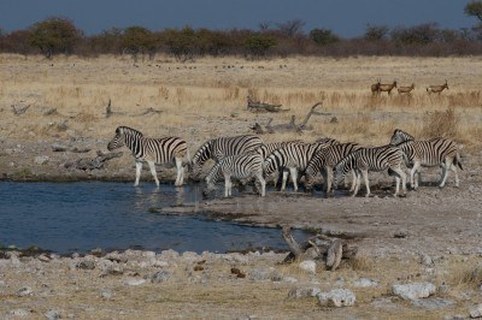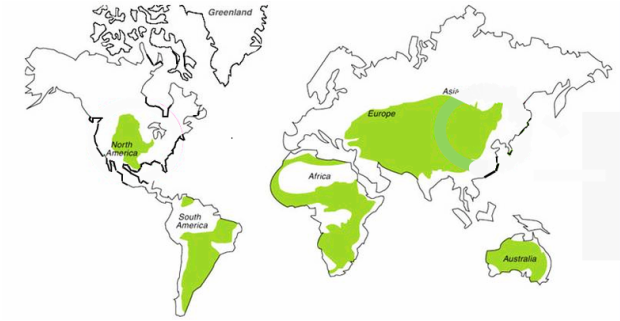Savanna Abiotic Factors: Unlocking the Secrets of the Grassland Ecosystem

The savanna, a vast expanse of grasslands dotted with trees, is a captivating ecosystem teeming with life. But what drives this vibrant biodiversity? Beyond the charismatic lions and graceful zebras lies a complex web of savanna abiotic factors, the non-living elements that shape this unique environment. Understanding these factors is crucial for appreciating the delicate balance of the savanna and its vulnerability to change. From scorching sun to seasonal rains, let’s delve into the world of savanna abiotic factors and unlock the secrets of this captivating grassland ecosystem.
The Building Blocks: Key Savanna Abiotic Factors

The savanna’s character is forged by a combination of essential abiotic factors: * Climate: Savannas are defined by their tropical or subtropical climate, characterized by distinct wet and dry seasons. The high temperatures and seasonal rainfall patterns directly influence vegetation growth, animal behavior, and overall ecosystem dynamics. * Soil: Savanna soils are typically nutrient-poor and sandy, with good drainage. This presents a challenge for plant growth, leading to the dominance of grasses adapted to these conditions. * Topography: While generally flat, savannas can feature gentle hills, undulating plains, and occasional rocky outcrops. These variations in topography create microhabitats, influencing plant distribution and animal behavior. * Sunlight: Abundant sunlight is a hallmark of savannas, fueling photosynthesis in grasses and supporting the growth of scattered trees.
The Delicate Dance: How Abiotic Factors Interact

These abiotic factors don’t exist in isolation; they engage in a complex interplay that shapes the savanna’s unique characteristics:
- Rainfall and Vegetation: The seasonal rainfall dictates the growth cycles of grasses and trees. During the wet season, grasses flourish, providing abundant food for herbivores. In the dry season, grasses wither, forcing animals to adapt or migrate.
- Soil and Plant Adaptations: The nutrient-poor soil has led to remarkable adaptations in savanna plants. Deep root systems allow grasses to access water stored deep underground, while some trees have developed symbiotic relationships with fungi to enhance nutrient uptake.
- Sunlight and Tree Distribution: The intense sunlight favors grasses, which can thrive in open areas. Trees, needing more shade and moisture, are often found along rivers or in clusters, creating islands of shade in the vast grassland.
📌 Note: Understanding these interactions is crucial for predicting how savanna ecosystems will respond to climate change and other environmental pressures.
The Savanna’s Vulnerability: A Fragile Balance

The savanna’s beauty belies its fragility. Changes in abiotic factors, even subtle ones, can have profound consequences:
- Climate Change: Altered rainfall patterns and rising temperatures can disrupt the delicate balance of the savanna, leading to desertification, loss of biodiversity, and increased wildfires.
- Deforestation: Clearing trees for agriculture or logging removes vital shade and disrupts the water cycle, further exacerbating the effects of climate change.
- Overgrazing: Excessive grazing by livestock can degrade soil, reduce grass cover, and contribute to desertification.
Preserving the Savanna: A Call to Action
Protecting the savanna requires a multi-pronged approach:
- Sustainable Land Management: Implementing practices like rotational grazing, reforestation, and soil conservation can help maintain the health of savanna ecosystems.
- Climate Change Mitigation: Global efforts to reduce greenhouse gas emissions are essential for safeguarding the savanna and other vulnerable ecosystems.
- Conservation Awareness: Educating communities about the importance of savannas and promoting sustainable tourism can foster a sense of stewardship.
What are the main types of savannas?
+Savannas are classified into different types based on factors like rainfall, vegetation, and location. Some common types include: Tropical savannas, Dry savannas, and Thornbush savannas.
How do animals adapt to the savanna's abiotic factors?
+Savanna animals have evolved remarkable adaptations to cope with the challenges of their environment. For example, giraffes have long necks to reach leaves high in trees, while meerkats live in burrows to escape the heat. Many animals are also migratory, following the seasonal availability of food and water.
What are some threats to savanna ecosystems besides climate change?
+In addition to climate change, savannas face threats from habitat loss due to agriculture and urbanization, poaching, invasive species, and pollution.
The savanna, with its intricate web of abiotic factors, is a testament to the resilience and beauty of nature. By understanding these factors and their interactions, we can work towards preserving this precious ecosystem for future generations. Savanna conservation, grassland ecosystem, abiotic factors, climate change, biodiversity, sustainable land management,savanna wildlife, African savanna, tropical savanna, dry savanna.



